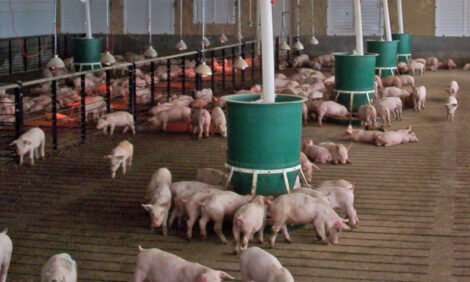



Global Import Demand for Meat and Poultry Forecast Higher in 2009
A one percent decline in pork imports is anticipated – the first fall since 1997 - largely due to China trimming back from its 2008 import surge. Published by the USDA Foreign Agricultural Service (FAS) in the series Livestock and Poultry: World Markets and Trade dated October 2008.Red meat and poultry (broiler and turkey) imports are forecast to rise 1 percent to 21.0 million tons in 2009.

Both beef and poultry imports are expected to expand by nearly 2 percent. The rise in beef is a reversal of the previous year’s expected decline. Poultry import growth slows compared to the previous 2 years. A one percent decline in pork imports is anticipated – the first decrease since 1997.
Growing import demand for beef is primarily driven by a forecast increase for the United States. Rising poultry trade is less concentrated in major markets and attributed to a number of countries such as Mexico, Cuba and Venezuela which more than offset an expected easing in purchases by Russia. Declining pork imports are largely due to China trimming back from its 2008 import surge, which is not anticipated to be counterbalanced by other markets.
Pork: 2009 Forecast Overview
Note: The China swine and pork PSDs have significant historical revisions based on new information. In early 2008, China’s National Statistics Bureau (NSB) announced revisions to 2006 data as a result of the Second National Agriculture Census which was undertaken in early 2007. In the recent publication of the NSB Statistics Yearbook 2008, additional revisions were published back to 1997 so as to align the results of the Second and First National Agriculture Censuses. Tables demonstrating these revisions are provided in another section of this circular.
Pork production forecast 1 percent higher at 97.9 million tons
Chinese production, which accounts for about half of the world, is forecast over 3 percent (1.2 million tons) higher. If China were excluded from the total, forecasted world production would be virtually unchanged as shrinkage in the EU-27 and the United States would be largely offset by growth in Brazil and Russia.

China: Generous profits in the swine industry partnered with government subsidies and tax incentives are expected to stimulate production. Heightened production costs hamper a more aggressive forecast. Production is not anticipated to return to its pre-PRRS (porcine reproductive respiratory syndrome or “blue ear disease”) level in the coming year.
EU-27: Production is expected to continue its decline as high feed prices put downward pressure on the pig crop and slaughter.
United States: Production is forecast to drop nearly 2 percent as lower farrowing intentions are signaling a decline.
Brazil: As costs are expected to moderate in the coming year with prospects of large corn and soybean crops, production is forecast over 3 percent higher at nearly 3.2 million tons. Larger production is also bolstered by anticipated hearty demand in both the domestic and international markets.
Exports: First decline in nine years to nearly 6.1 million tons
Exports are forecast 2 percent (130,000 tons) weaker driven primarily by a drop in U.S. and EU-27 shipments which are partially offset by Brazil.

United States: Lower U.S. exports are primarily due to a weakening of Chinese import demand. The decline by China adversely impacts the United States export forecast more than other key exporters as it was the primary beneficiary of its recent import surge. Although imports for key markets such as Japan and Mexico are generally expected to be stable, U.S. exports are anticipated to decline 99,000 tons (4 percent) to nearly 2.3 million tons. The forecast downturn will have a minimal effect on the United States’ 38 percent share of world trade.
EU-27: Exports are forecast over 3 percent less at nearly 1.5 million tons as lower production reduces exportable supplies.
Brazil: Exports are forecast to rebound over 4 percent to 705,000 tons as shipments to non-traditional markets continue to flourish.
Imports expected to decline slightly
Excluding China, forecast changes in imports among major markets are generally minimal albeit mixed. Imports by Japan, the world’s largest market, are expected to be stable despite rising beef imports.

China: Chinese demand is determined by its production forecast as imports account for generally one percent or less of its total supply. Thus, rising production and price stability are anticipated to ease import demand by 25 percent to 360,000 tons.
Russia: Rising production has been unable to keep pace with expanding consumption, fueling import demand, currently.
Mexico: A weaker economy is expected to curb consumption pressuring imports nearly 2 percent lower to 530,000 tons.
Korea: Imports are forecast to shrink to 440,000 tons (4 percent) due to the return of U.S. beef to the market, mandatory labeling of country of origin at restaurants, and the suspension of Chilean pork imports due to dioxin residues.
Ukraine: Pig inventories are currently expected to decline 10-15 percent on higher feed grain prices and government policies, which drives the import forecast higher by 29 percent (40,000 tons).
Further Reading
| - | You can view the full report by clicking here. |
November 2008








